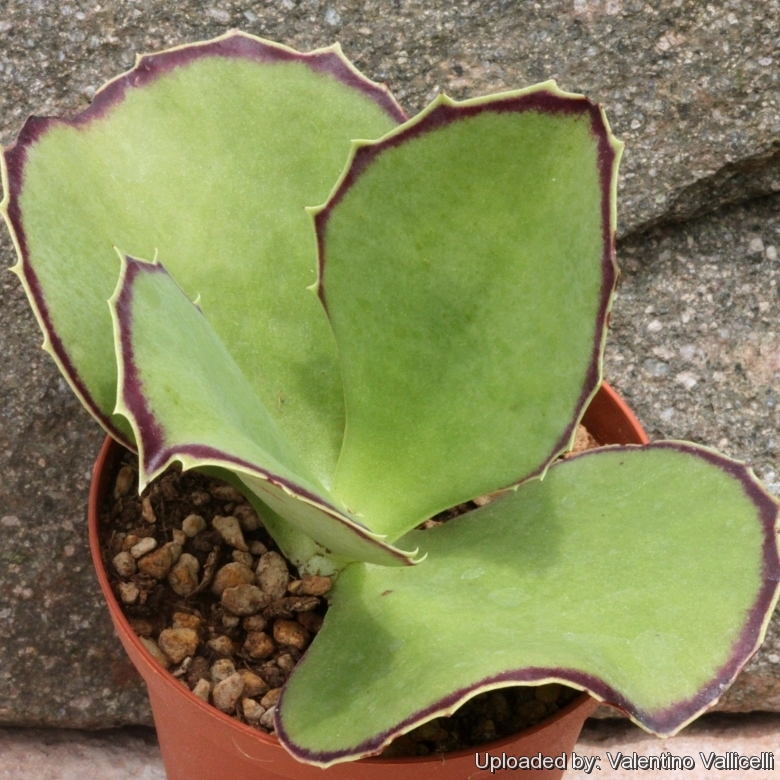
Kalanchoe synsepala Photo by: Valentino Vallicelli
Origin and Habitat: Central and central-southern Madagascar.
Habitat and ecology: Rocky sunny places. Kalanchoe synsepalaSN|23057]]SN|23057]] is the only stoloniferous taxon of the genus. The stolons produce themselves further stolons, and natural populations consist of a tangle of stolons and rosettes of various ages and sizes.
Synonyms:
See all synonyms of Kalanchoe synsepala
back
Accepted name in llifle Database:Kalanchoe synsepala BakerJ. Bot. 20: 110 1882Synonymy: 5
back
Common Names include:
ENGLISH: Walking Kalanchoe., Cup Kalanchoe
Description: Kalanchoe synsepalaSN|23057]]SN|23057]] is a perennials, stoloniferous species. It is beautiful but very variable and offer a huge diversity of shapes and sizes, the more common form has wide, grey-green, plastic-leaf form with bright green colouration and pink-purple margins. It produces annually 2 to 4 long stolons (like strawberry) with baby plants at the ends of long stems, which eventually trail attractively over the containers edge and bend down to the ground and take root, giving rise to its common name of "walking kalanchoe". The stolons produce themselves other stolons and forms large carpets of rosettes of various ages and sizes.
Stem: Short, woody, stout, always umbranched up to 40 cm tall, erect or decumbent.
Leaves: Few in terminal rosettes, large 6-15 mm long, 4-7 mm wide, sessile or subsessile, with the lower leaves opposite, sessile, broad oval to oblong-spatulate, fleshy, cupped, with purple band inside of marginal teeth. Glabrous to more or less fuzzy (especially new leaves). Margin entire, dentate or sometime dissected, tooth rigid. The leaf size and colour are variable, which results in a number of selected cultivars.
Inflorescences: Axillary, usually 2 opposite very dense corymbose cymes, 2-9 cm long. Peduncle hairy-glandular in the upper part, 15-30 cm long. Ped 3-12 mm.
Flowers: Tubular, very pale pink to reddish, small in dense terminal cymes.
Blooming season: September, October, November.
Seeds: Oblong, 1 mm long.
Chromosome number: 2n = 72.
Bibliography: Major references and further lectures
1) Urs Eggli "Illustrated Handbook of Succulent Plants: Crassulaceae" Springer Science & Business Media, 06 December 2012
2) Werner Rauh "Succulent and xerophytic plants of Madagascar", Volume 1
Strawberry Press, 1995
3) Kalanchoe synsepala. In: Journal of Botany, British and Foreign. Volume 20, London 1882, page. 110.
 Kalanchoe synsepala Photo by: Valentino Vallicelli
Kalanchoe synsepala Photo by: Valentino Vallicelli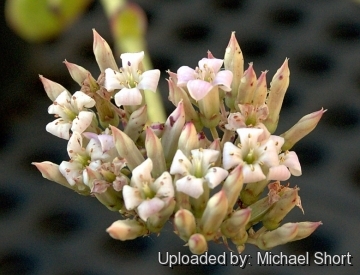 Kalanchoe synsepala Photo by: Michael Short
Kalanchoe synsepala Photo by: Michael Short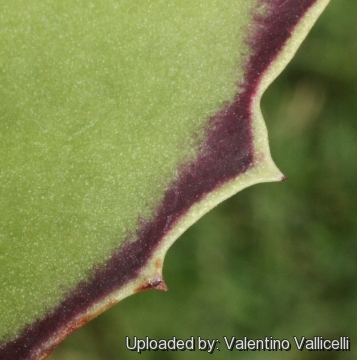 Kalanchoe synsepala Photo by: Valentino Vallicelli
Kalanchoe synsepala Photo by: Valentino Vallicelli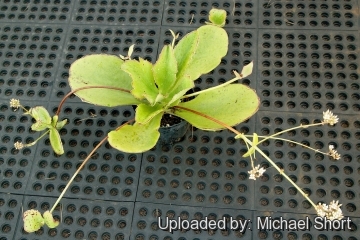 Kalanchoe synsepala Photo by: Michael Short
Kalanchoe synsepala Photo by: Michael Short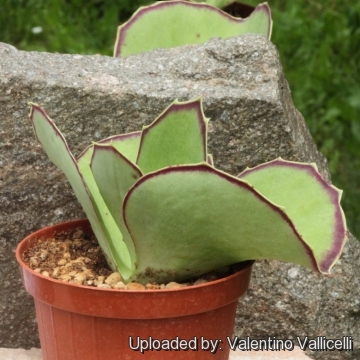 Kalanchoe synsepala Photo by: Valentino Vallicelli
Kalanchoe synsepala Photo by: Valentino VallicelliSend a photo of this plant.The gallery now contains thousands of pictures, however it is possible to do even more. We are, of course, seeking photos of species not yet shown in the gallery but not only that, we are also looking for better pictures than those already present.
Read More... Cultivation and Propagation: Very easy to grow and drought-resistant. It takes a good deal of sun, though still prefers some shade. In tropical countries without the cool and change in the daylight hours of changing seasons, it does not flower. Grows well in a hanging basket outside all year. Never left out so far below 2° C degrees.















